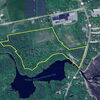Processing Your Payment
Please do not leave this page until complete. This can take a few moments.
- News
-
Editions
-
- Lists
-
Viewpoints
-
Our Events
-
Event Info
- Women's Leadership Forum 2025
- On the Road with Mainebiz in Bethel
- Health Care Forum 2025
- On The Road with Mainebiz in Greenville
- On The Road with Mainebiz in Waterville
- Small Business Forum 2025
- Outstanding Women in Business Reception 2025
- On The Road with Mainebiz in Bath
- 60 Ideas in 60 Minutes Portland 2025
- 40 Under 40 Awards Reception 2025
- On The Road with Mainebiz in Lewiston / Auburn
- 60 Ideas in 60 Minutes Bangor 2025
Award Honorees
- 2025 Business Leaders of the Year
- 2024 Women to Watch Honorees
- 2024 Business Leaders of the Year
- 2023 NextUp: 40 Under 40 Honorees
- 2023 Women to Watch Honorees
- 2023 Business Leaders of the Year
- 2022 NextUp: 40 Under 40 Honorees
- 2022 Women to Watch Honorees
- 2022 Business Leaders of the Year
-
-
Calendar
-
Biz Marketplace
- News
-
Editions
View Digital Editions
Biweekly Issues
- April 21, 2025 Edition
- April 7, 2025
- March 24, 2025
- March 10, 2025
- Feb. 24, 2025
- Feb. 10, 2025
- + More
Special Editions
- Lists
- Viewpoints
-
Our Events
Event Info
- View all Events
- Women's Leadership Forum 2025
- On the Road with Mainebiz in Bethel
- Health Care Forum 2025
- On The Road with Mainebiz in Greenville
- On The Road with Mainebiz in Waterville
- + More
Award Honorees
- 2025 Business Leaders of the Year
- 2024 Women to Watch Honorees
- 2024 Business Leaders of the Year
- 2023 NextUp: 40 Under 40 Honorees
- 2023 Women to Watch Honorees
- 2023 Business Leaders of the Year
- + More
- 2022 NextUp: 40 Under 40 Honorees
- 2022 Women to Watch Honorees
- 2022 Business Leaders of the Year
- Nomination Forms
- Calendar
- Biz Marketplace
Maine needs to increase investment in mass transit, report says
 FILE PHOTO / COURTESY GREATER PORTLAND TRANSIT DISTRICT
In 2022, federal funds allowed Greater Portand transit systems to invest more than $8 million in service and accessibility improvements, reduced fares, and technology purchases.
FILE PHOTO / COURTESY GREATER PORTLAND TRANSIT DISTRICT
In 2022, federal funds allowed Greater Portand transit systems to invest more than $8 million in service and accessibility improvements, reduced fares, and technology purchases.
To best support local transit providers and match local funding for transit, the state should contribute at least $8.9 million annually, or 11% of current operating expenses, and also continue to provide an additional $2 million annually for innovative projects.
The money would be a much-need contribution to transit systems throughout the state, according to the Public Transit Advisory Council, a voluntary board that was established by statute in 2015 to advise the Departments of Transportation, Labor, and Health and Human Services on public transportation policies and priorities.
The recommendation is an increase from current funding levels.
For several years, state funding for transit operations was $1.14 million.
For fiscal year 2025, that was increased by $5 million, with $3 million going to transit operations and $2 million to discretionary projects.
Total funding for state fiscal year 2026 is expected to be $6.14 million, which includes $2 million in discretionary funds and the remainder to transit operations.
Work, school commutes
The council this week released its biennial report and on Tuesday briefed legislators on the Transportation Committee.
According to the report, Maine is meeting just 11% of the demonstrated need for public transportation statewide even though ridership has rebounded from pandemic lows.
The report calls for increasing state operating funding for transit systems and dedicated funding so that service expansion can be implemented.
The situation is causing a workforce shortage in the transit industry as well difficulties for employees in general to get to work, the report says.
“Without additional funding, transit operators will continue to face workforce shortages and fleet maintenance challenges,” said Chad Heid, the council’s chair.
The top concern cited by transit operators is having insufficient funding to operate affordable, reliable and effective transit services for their communities.
Currently, the state covers around 2% of transit operating costs, with local and federal resources filling in the remainder.
“We’re literally leaving thousands of Mainers on their doorstep without a way to commute to work, get to school, visit family or run errands,” said Zoe Miller, executive director of the Moving Maine Network, a statewide transportation collaborative.
More than 90,000 Maine residents of driving age do not have a driver’s license, and more than 40,000 Maine households do not have access to a vehicle, the report says.
Data submitted by local transit providers show a need for over $108 million from 2024 to 2028 in capital expenses, including fleet replacements, facilities upgrades and other critical investments, the report says.
Transportation challenges particularly affect low-income and marginalized communities, according to an independent report released in January by the John T. Gorman Foundation.
Key findings
The Public Transit Advisory Council report found:
- 40,000 Maine households lack reliable access to a vehicle, including about 15,000 employed workers without a vehicle.
- Basic transportation expenses for most Maine households exceed $1,000 per month, surpassing costs for necessities like food and housing for many families.
- Current public transit programs meet only about 11% of Maine's total transportation need, providing 3 million out of 28 million trips per year.
- 3,000 Mainers regularly commute using public transportation.
- Nearly 90,000 Maine adults 18 and older do not hold a driver's license, including over 15,000 individuals in their 20's, a critical age for accessing education and employment opportunities.
Funding paths
The council identified three potential pathways for increasing funding for transit.
- Adopt larger highway fund revenue sources and establish a statutory minimum transfer for transit expenditures.
- Earmark minor revenue sources for a multimodal fund and establish a statutory minimum transfer specifically for multimodal fund purposes.
- Earmark revenue sources specifically for transit operations.
Maine’s 16 transit agencies provided 5.2 million rides in 2023, the most recent reporting year, and employ more than 1,500 people. That doesn’t include the Maine State Ferry Service or the Amtrak Downeaster service, the latter of which achieved record ridership in 2024.
To read the full report, click here.













0 Comments